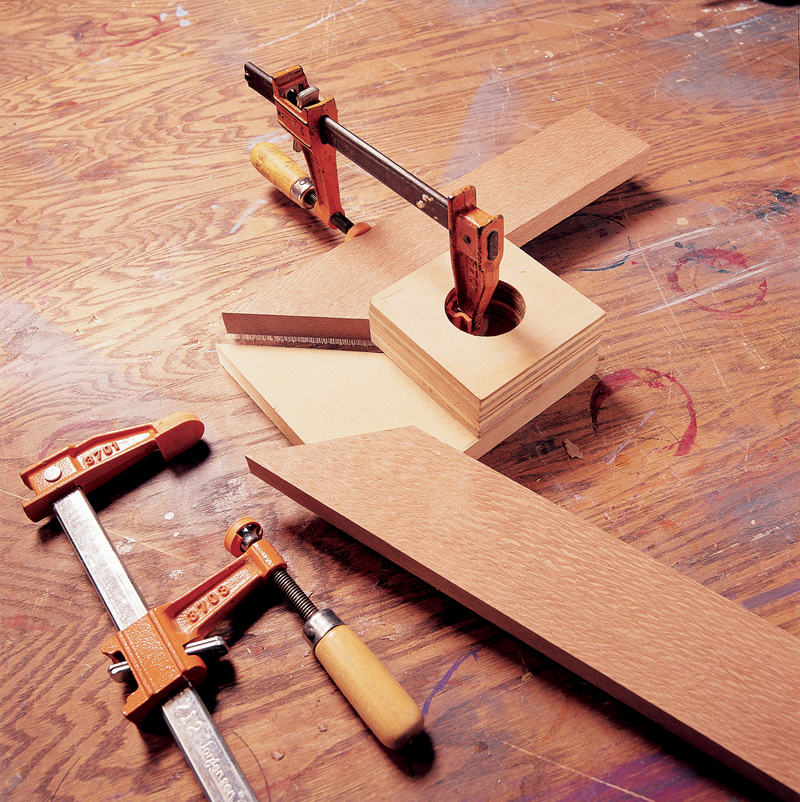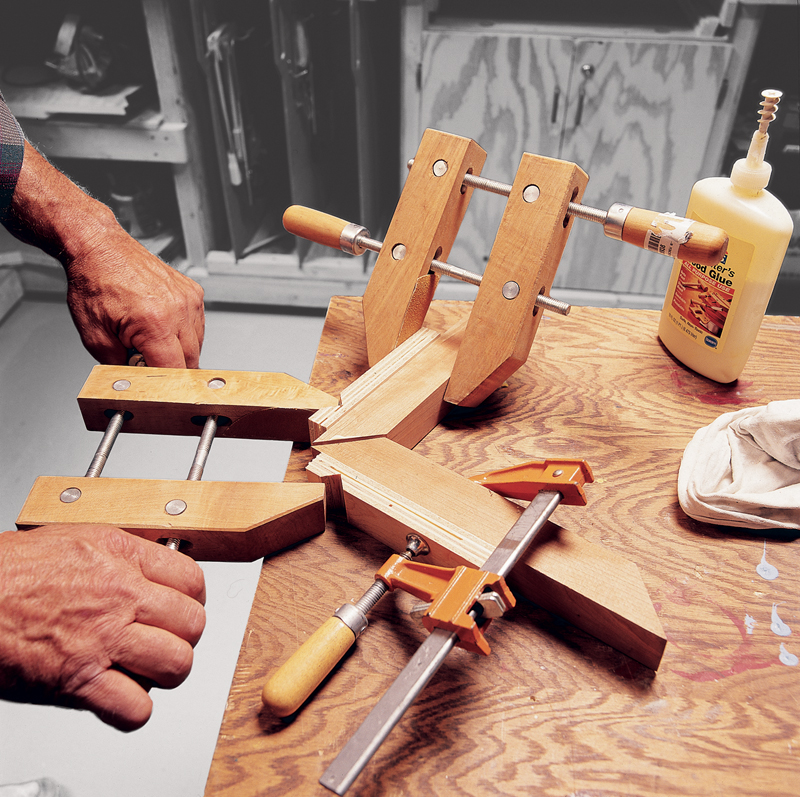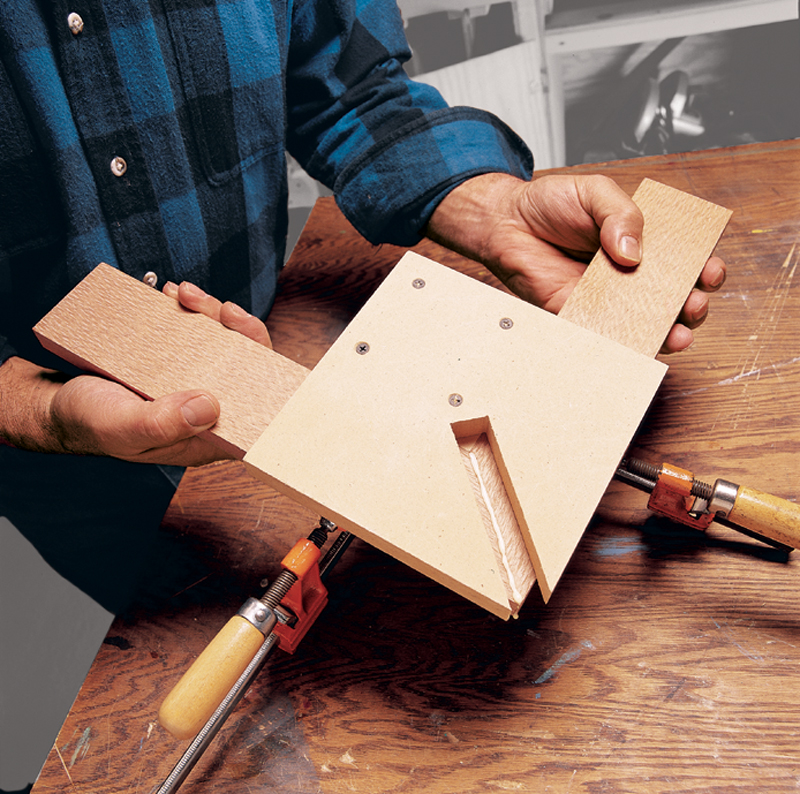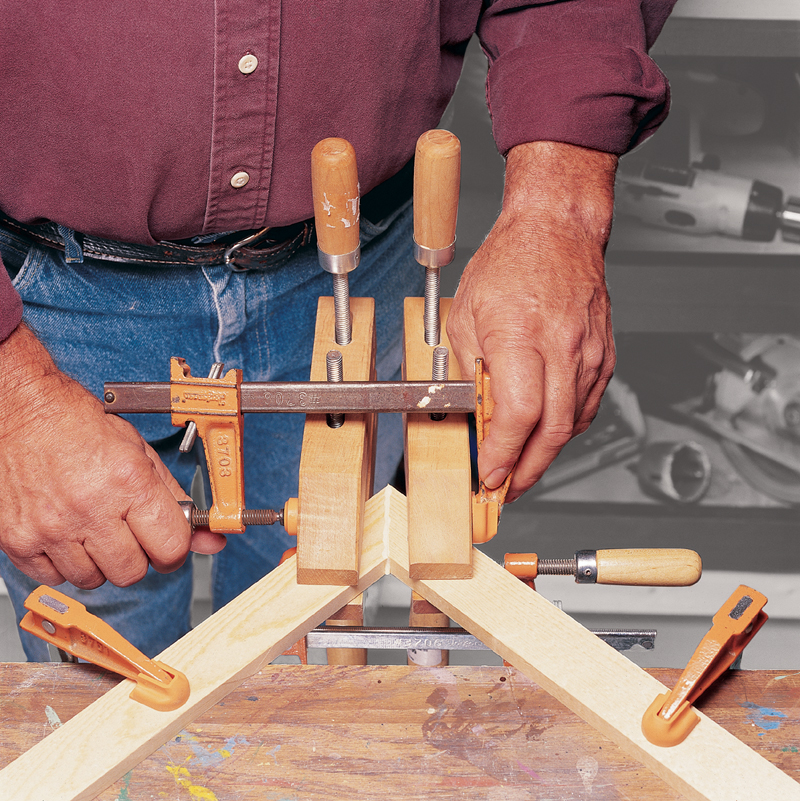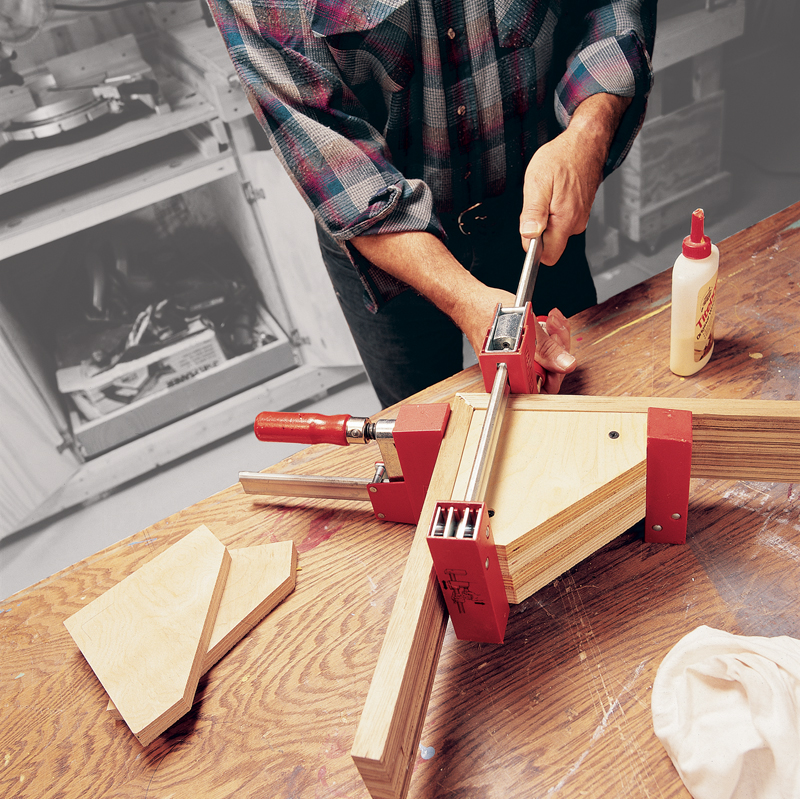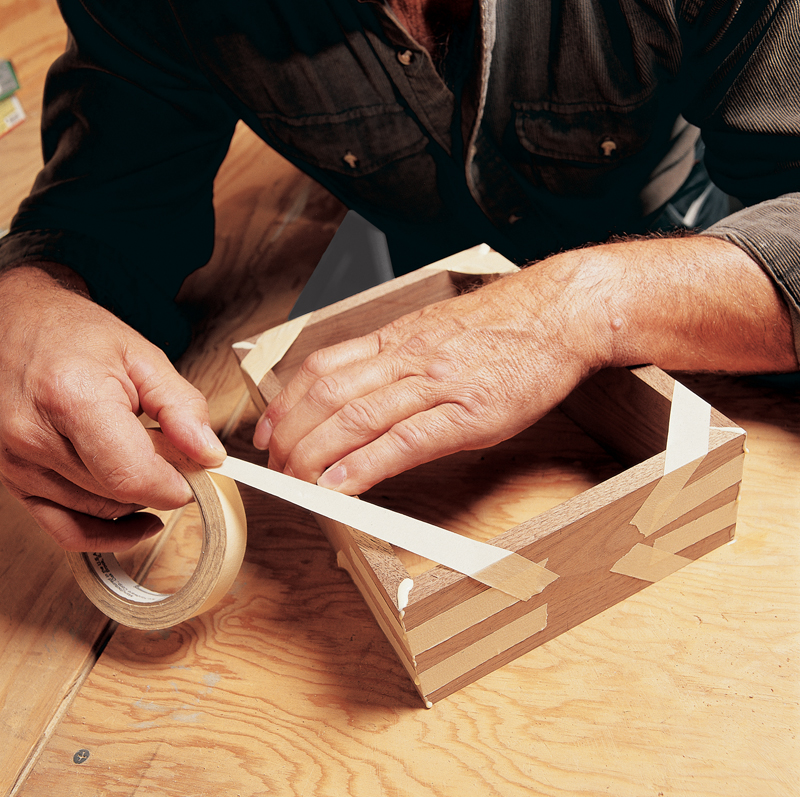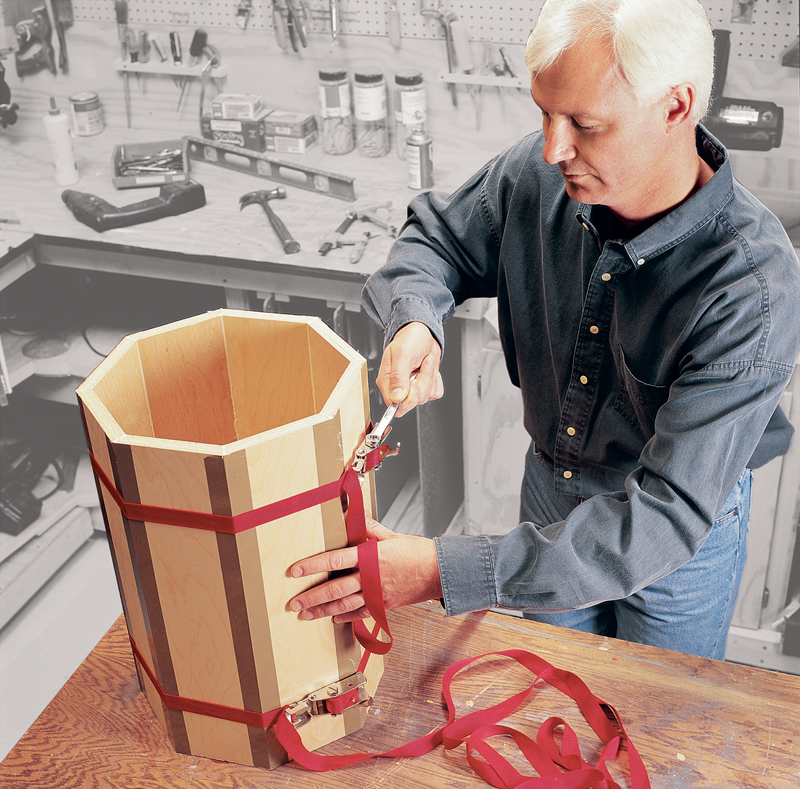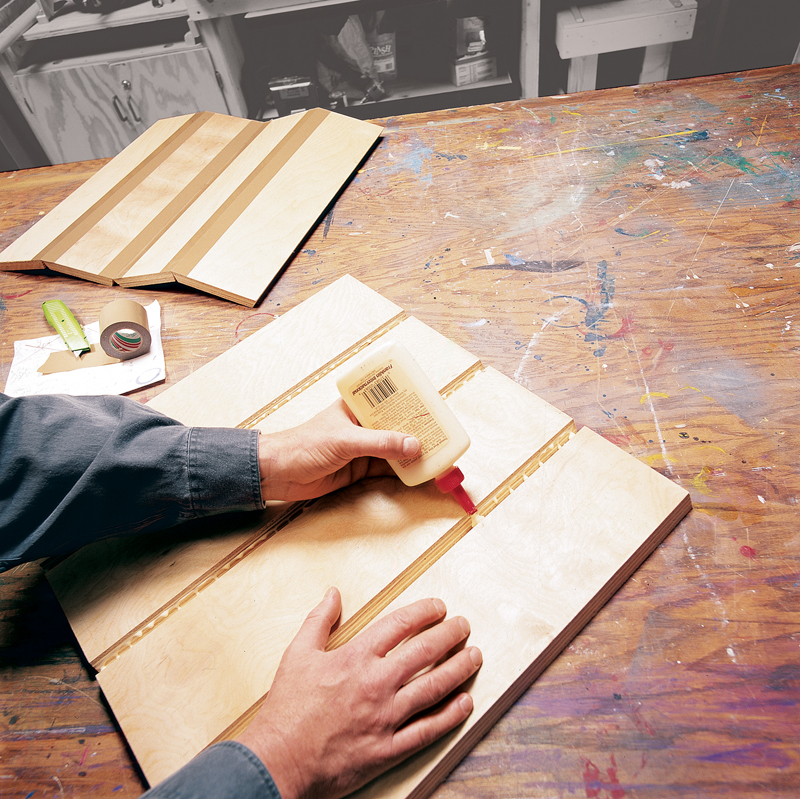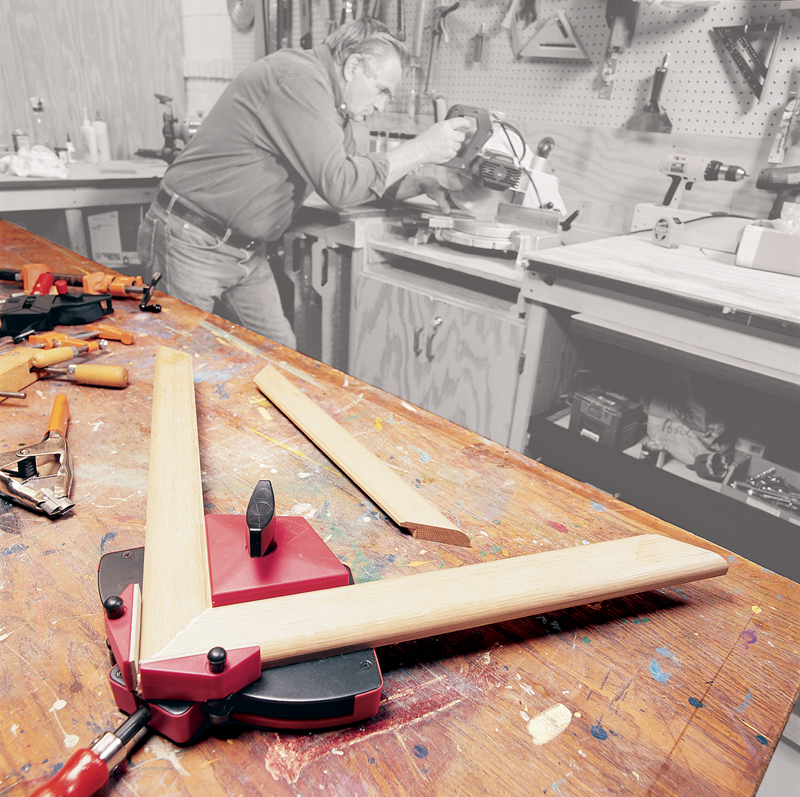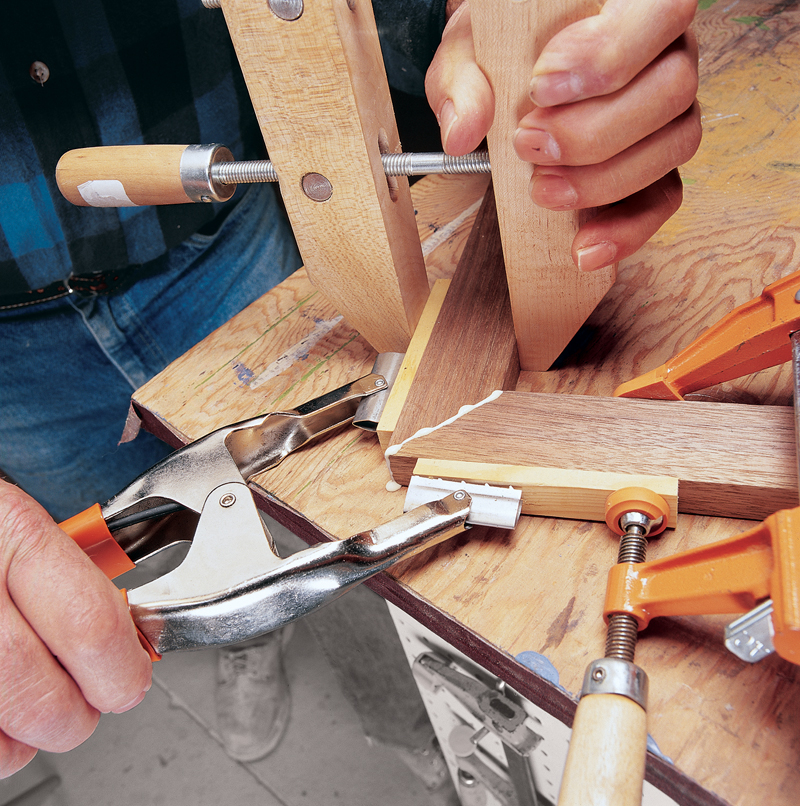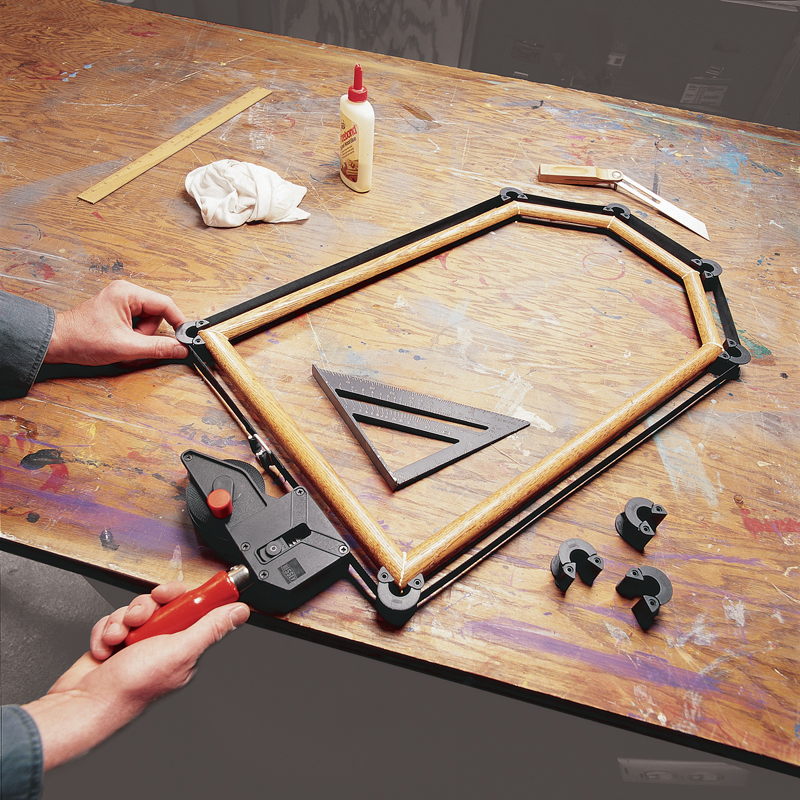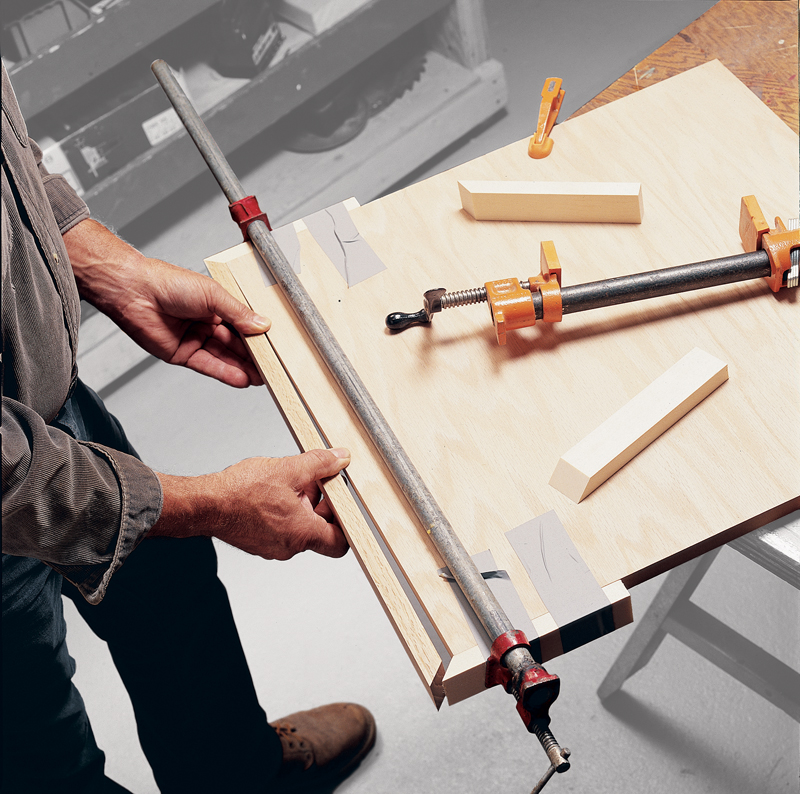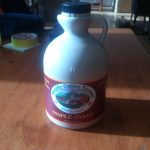We may receive a commission when you use our affiliate links. However, this does not impact our recommendations.
Tips for Gluing Miters
By Bruce Wiebe
Every woodworker faces their share of miter joints, whether framing a mirror, edge-banding a coffee table or assembling a jewelry box. And even for seasoned woodworkers, gluing miter joints can be frustrating. Gaps appear. Imperfect cutting or gluing leaves the joint misaligned. One of the boards protrudes slightly at the corner, forcing you to sand it off, revealing a 1/16-in. strip of endgrain. Three of the four miter joints in a frame may be dead on, and the fourth ends up skewed.
Here’s some help. Because there is no “best” way to deal with gluing-up miters, we’ve given you a collection of tips, all of which are proven to make this often maddening process go smoother.
Notched Pressure Pads
These pads work particularly well if you like using handscrew clamps. Cut notches in two 1/2-in.-thick strips of softwood, and clamp them tightly on each board end so the notches are near the middle of the joint. Tighten the handscrew gently against the notches while pressing the face of the joint with a fingertip to keep the board edges flush.
Click any image to view a larger version.
Bored Block On Slotted Base
This benchtop gluing jig lets you see, and adjust, both faces of the miter joint while clamping it. Hold the joint tight, without glue, while you clamp one board in place. Then apply glue to both mitered faces. Push the unclamped board into place, then add the second bar clamp.
To make this jig, cut a diagonal notch halfway across a 7-in.-square piece of medium-density fiberboard. The notch lets you see if the joint is closed on the underside, as well as letting the glue dry thoroughly. For the clamping block, glue together two 4-in. squares of plywood, drill a 2-in. hole in the middle, and screw this assembly to the fiberboard with one square corner over the slot. Be sure the corner of the block is square, or your precisely- cut 45-degree joint faces won’t be flush when you clamp them together.
Handscrews with Sandpaper Jaws and Bar Clamps
Put strips of 60-grit sticky-back sandpaper in the jaws of two handscrews and clamp them parallel on either side of the joint. Now draw the joint closed by clamping the handscrews together with bar clamps on top and bottom.
Stacked Plywood Triangles
If you’re gluing a box with mitered corners, cut several plywood triangles, and screw them together into a triangular block. Cut off the inside corner so it doesn’t interfere with the joint. Without glue, clamp the boards onto the triangular block, and when the joint’s perfectly aligned, remove one board, apply glue, and reclamp.
Masking Tape
Masking tape works well on wider miter joints that don’t bear much weight, as in a jewelry box. Tape the joint along the middle section first, apply glue, and close the joint. Now stretch tape at 45- degree angles on both corners. Allow plenty of time for the glue to dry when you use tape, because you’re limiting air circulation.
Packaging Tape and Web Clamps
The strong adhesive and tough plastic of packaging tape allow it to work as a hinge on long, mitered corners. After carefully cutting the miters, lay the boards outside-face up and side by side so their sharp edges touch. Apply strips of tape along each joint, pressing the tape firmly onto the wood, then flip the boards and apply glue. Use web clamps to tightly hold the joints together, and wipe the squeeze-out from the inside corners. Again, allow the glue to dry thoroughly before removing the clamps and tape.
Bessey Miter Clamp
This clamp works like a dream. At $128 each, though, it’s an expensive dream. A sliding block pushes on the inside of the joint to snug it against two pivoting, soft-jawed pressure pads. The pivoting pads work like a pair of thumbs to align the joint perfectly as they apply pressure. If you make a lot of miters, this clamp is a godsend.
Pivoting Jaw Clamp
This clamp, with pivoting jaws and razor-sharp teeth, works great for single miter joints. But the barracuda-like jaws leave nasty scratches on the wood, so tape or clamp softwood strips on the corners to shield the project pieces. Reasonable at $13 each.
Bessey Band Clamp with Pivoting Corners
If you’re building smaller miter joints, give this clamp a try. It works especially well for assembling narrow frames that don’t require a ton of clamping pressure. It has a geared winder that tightens and rolls up the band on both sides, and a handle you twist to increase the pressure. Slotted angle-clips press on each corner keeping pressure uniform. The jaws on the circular clips adjust to any angle. $31 for the clamp and four angle clips. A box of six extra clips costs $14.
Banding Mitered Edges
When you’re finishing a plywood tabletop or cabinet door with mitered edging, cut four short pieces with a 45-degree angle on one end. The short pieces work great to help size and locate the edging. Tape and clamp the short pieces in place on two of the opposite faces, then glue on the first two edging strips. Remove the short blocks so they don’t get glued on.
Source
Note: Product availability and prices are subject to change.
American Clamping Corp., 800-828-1004, Bessey Miter and Band Clamps.
This story originally appeared in American Woodworker April 1999, issue #72.
Here are some supplies and tools we find essential in our everyday work around the shop. We may receive a commission from sales referred by our links; however, we have carefully selected these products for their usefulness and quality.



